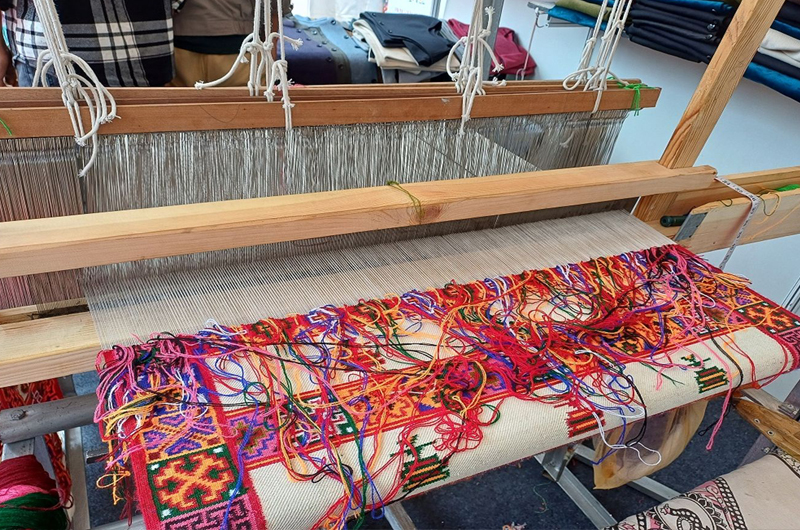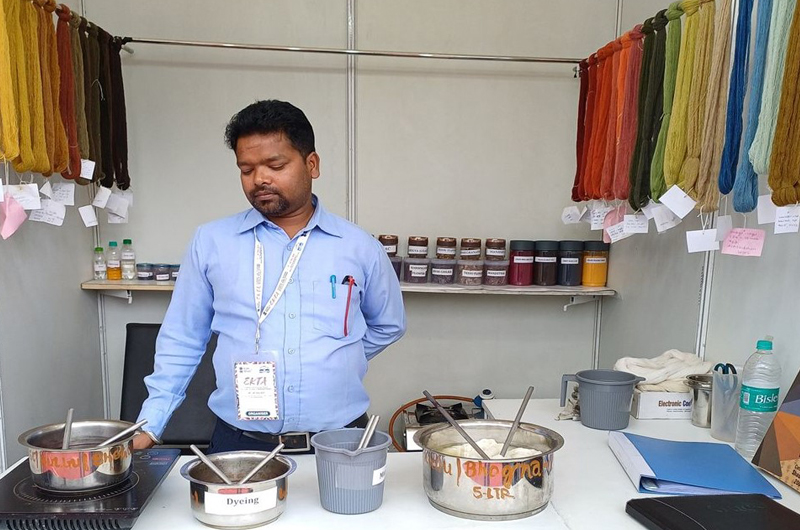An exhibition-cum-knowledge-sharing event demonstrated how small and medium textile units can circumvent the need for effluent plants by using natural dyes. Sarita Brara reports from Shimla
Peak tourist season sees a lot of exhibitions and fairs in Shimla every year, and handicraft and items such as shawls, stoles, bags, saris, salwar suit pieces, curios, traditional artefacts and paintings by self-help groups or artisans from rural clusters are hot favourites. But a recent exhibition in the tourist town was not just about selling products but a learning experience as well.
From Loom to Lifestyle – A Future Woven with Tradition was the theme of the weeklong exhibition-cum-knowledge sharing event jointly organised by the Union Textile Ministry the Himachal Pradesh Government. While most of stalls stocked handicrafts and other items made from wool, silk and jute, one of the stalls demonstrated the art of dyeing yarn from natural colours. Coils of various hues and shades hung from hooks on the walls, and glass containers with flowers and herbs used for making natural colours were lined up on shelves. It was interesting to see how white and cream wool and silk or cotton yarn acquired shades of red, pink, yellow, green, orange and blue.
Pooran Singh from Bunkar Seva Kendra, Kulu, who manned the stall, demonstrated the whole process – cleaning the yarn using a method called scouring and then ‘mordanting’, which means preparing the fibre to accept the colours. This was done by using alum in water. He also explained how the flowers and herbs from which natural colours are made are soaked in water the previous day, and then boiled at a particular temperature for a specified period of time before the yarn is put in it for fast colours.

Singh used the manjishtha herb to produce red colour and lac for a shade of carrot-red. Harshingar blooms and turmeric were used to get yellow. Even onion peels were used in the dyeing process. And what’s more, the residue of the herbs and flowers after extracting the dyes can be used as manure, Singh told visitors to his stall. The aim was to show how the skill can be used by entrepreneurs with small and medium units, and to promote environment-friendly art, as no chemicals are used in the process. (Home-based dyeing units and small clusters cannot use chemicals as mandatory effluent plants cannot be set up.) At an adjacent stall, visitors saw how the wool and yarn were woven into shawls and stoles.
The exhibition, EKTA (Exhibition cum Knowledge Sharing for Textile Advantage), aimed to showcase the products crafted by self-help groups and mainstream local artisans into national and global textile value chains, besides giving a boost to fibre-based rural entrepreneurship and rural economy. The broader objective was to provide youth the skills for sustainable livelihood and self-employment in the textile sector
Rural artisans interested in setting up weaving units are given a 45-day training, while a course in dyeing is 16-days long. Participants of the skill upgradation scheme are given a wage compensation of Rs 300 per day during training, which is organised wherever there are pockets of at least 20 weavers.
(The writer is a senior journalist who divides time between Delhi and Shimla.)



 from Webdoux
from Webdoux